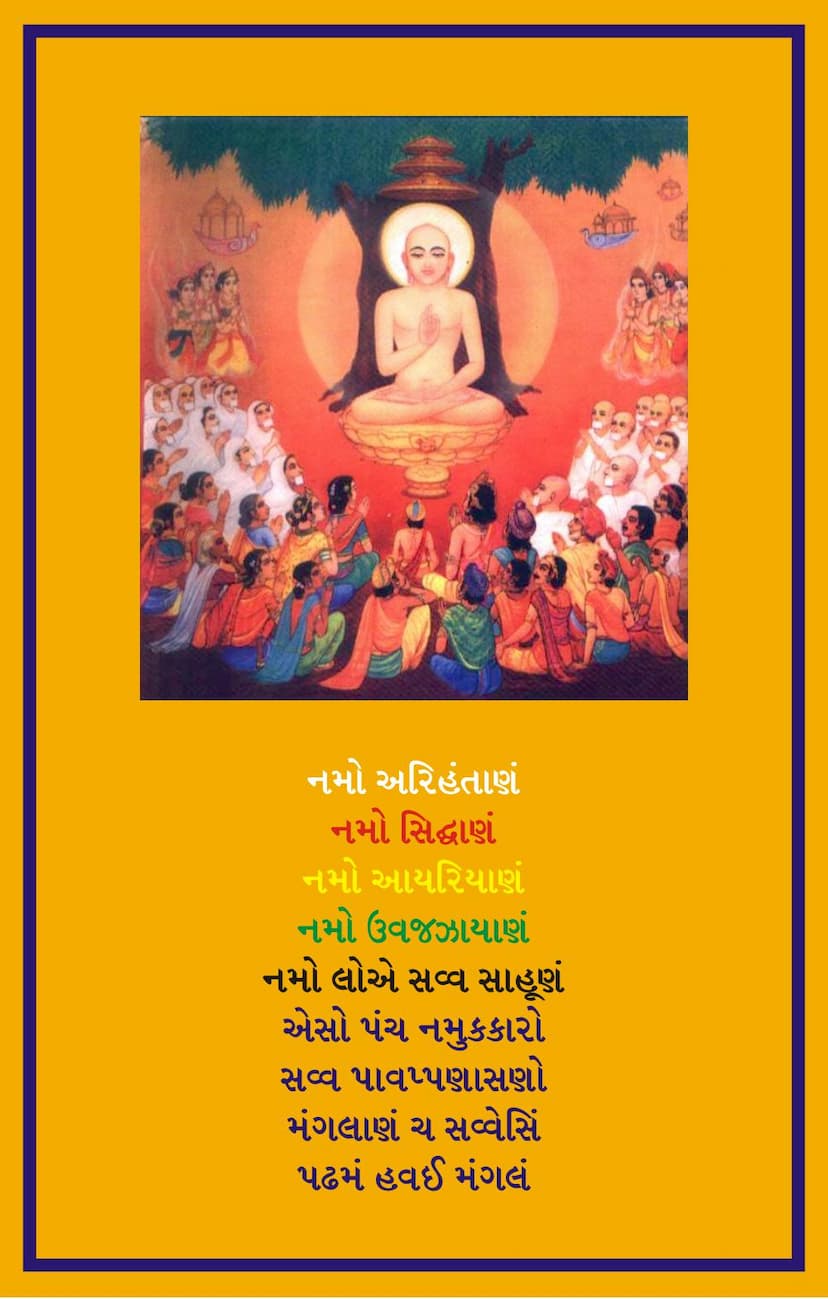Agam 14 Upang 03 Jivabhigam Sutra Part 01 Sthanakvasi
Added to library: September 1, 2025
Loading image...

Summary
This Jain text, Jivabhigam Sutra Part 01, authored by Ghasilal Maharaj and published by A B Shwetambar Sthanakvasi Jain Shastroddhar Samiti, is the first part of the third Upanga within the Agam literature. It delves deeply into the nature and classification of souls (Jiva) and non-living entities (Ajiwa).
Key aspects covered in the provided text fragments include:
- Mangalacharan (Invocation): The text begins with a traditional Jain invocation, paying homage to Lord Mahavir and Lord Gautam Swami, and invoking the purity of Jinavani (the teachings of the Jinas).
- Purpose and Justification of the Text: The author clarifies that the Jivabhigam Sutra (and its commentary, Prameya Dyotikā) aims to make the profound teachings of Jainism accessible to those with less intellectual capacity. The text establishes its purpose by highlighting the importance of understanding what is to be embraced (upadeya) and what is to be relinquished (heya) for spiritual liberation, which is achieved through right discrimination and the guidance of the omniscient (Aptas).
- Nature of the Text and its Author: The commentary, Prameya Dyotikā, is attributed to Muni Ghasilal, who intends to explain the deep and concise verses of the original Jivabhigam Sutra. The author expresses humility, acknowledging the efforts of previous scholars while aiming to provide a new perspective for easier comprehension.
- Theology and Cosmology: The text emphasizes that true liberation (moksha) comes from the destruction of passions like attachment (rag) and aversion (dvesha), which is only possible for the Arhats (the liberated souls). It positions the Jivabhigam Sutra as a means to overcome the poison of attachment and the fire of hatred, acting as a guide towards salvation.
- Detailed Classification of Souls and Entities (Gati-Gati, Sangrahana, Samudghata, etc.): The table of contents and subsequent pages reveal a meticulous and exhaustive classification system. The text systematically analyzes various aspects of existence, including:
- Upadanas (Causes): Identifying the foundational elements of existence.
- Dwaras (Doors/Categories of Analysis): These are numerous and cover a vast range of characteristics used to understand souls and non-living entities. Examples from the table of contents include:
- Body (Sharir): Discussing different types of bodies.
- Avagahana (Spatial Extent): Analyzing the spatial dimensions of beings.
- Samhanana (Bone Structure/Strength): Classifying beings based on their physical constitution.
- Samsthana (Physical Form/Configuration): Describing various body shapes.
- Kashaya (Passions): Examining the types of internal afflictions.
- Sangya (Consciousness/Perceptions): Analyzing the cognitive faculties.
- Leshya (Subtle Body Coloration): Describing the subtle aura associated with beings.
- Indriya (Sense Organs): Classifying based on the number of senses.
- Samudghata (Subtle Body Projection): Discussing the projection of the subtle body.
- Sangyi Dwara (Conscious Beings): Differentiating conscious from unconscious entities.
- Veda (Sex/Gender): Classifying based on sexual disposition.
- Paryapti (Attainment of Capabilities): Discussing the stages of development.
- Drushti (Viewpoint/Philosophy): Examining different perspectives.
- Darshana (Perception): Analyzing modes of perception.
- Jnana (Knowledge): Classifying the types of knowledge.
- Yoga (Activity/Karma): Analyzing the types of actions.
- Upayoga (Function/Application): Describing the functioning of the soul.
- Ahar (Nutrition/Consumption): Detailing the process of sustenance.
- Utpad (Birth/Origin): Explaining the origins of beings.
- Sthiti (Duration/Lifespan): Analyzing the lifespan of beings.
- Chyavana (Death/Migration): Describing the process of death and transmigration.
- Gati-Agati (Motion/Movement): Analyzing the types of movement and migration.
- Classification of Souls by Gati (Realm of Existence): The text details the characteristics of souls in different realms: Narak (hellish beings), Tiryanch (animals), Manushya (humans), and Deva (celestial beings).
- Specifics of Jain Cosmology and Biology: The text provides intricate details about the classification of beings, such as the different types of earth-bodied (Prithvi Kayika) beings (subtle and gross), water-bodied (Ap Kayika), fire-bodied (Tejas Kayika), wind-bodied (Vayu Kayika), and vegetation-bodied (Vanaspati Kayika) souls. It also details the classification of beings within the sensory categories (two-sensed, three-sensed, four-sensed, and five-sensed beings).
- Detailed Descriptions of Transmigratory States: For each category of life, the text explores their bodily attributes, lifespan, sensory capabilities, passions, states of consciousness, and the types of births and deaths they undergo.
- Specific Rules for Studying the Sutra: Pages 6 and 7 provide detailed instructions regarding the auspicious times for studying the original text, including specific periods to avoid (Asvadhyaya). These include meteorological phenomena, celestial events like eclipses, and specific social observances.
The text emphasizes a systematic and comprehensive understanding of the universe from a Jain philosophical perspective, focusing on the classification and characteristics of all sentient and insentient existences to guide towards the path of liberation.